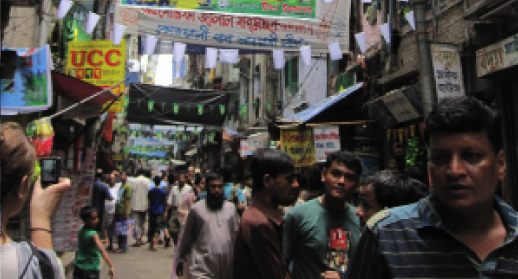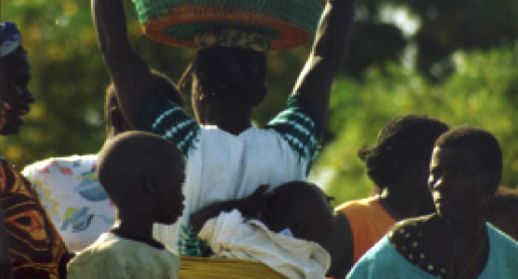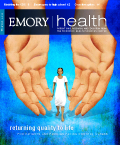CDCs for the World

by Sylvia Wrobel
For more than a decade, beginning every December, clusters of people in some Bangladeshi villages suddenly grew sick with fever, pain, and breathing problems. Those symptoms were followed quickly by seizures and coma. Then, just as suddenly, every May, the illness disappeared, leaving in its wake a death rate of 70%.
For some who survived, they had lasting brain damage. Villagers had their own theories about the mysterious attacks, but it took a developing public health structure in Bangladesh to solve the mystery.
With help from the CDC, scientists at the Institute of Epidemiology, Disease Control, and Research (IEDCR) in Bangladesh tracked the cause of the disease to Nipah, an emerging virus first seen in nearby Malaysia six years earlier. In Malaysia, pigs carried the virus, but in Bangladesh, it turned out to be bats.
What is IANPHI?The International Association of national Public health institutes links and strengthens the world’s national public health institutes, boosting the capacity of low-resource countries to identify and prevent health risks and ultimately save lives. Members:Directors from CDC-like organizations in 72 countries, from Afghanistan to Vietnam, representing more than 60% of the world’s population. Brain Storm:Jeffrey Koplan, former director of the CDC and now director of Emory’s Global Health Institute, and Pekka Puska, his counterpart at Finland’s National Institute for Health and Welfare, envisioned IANPHI in 2001 after fielding ongoing questions from public health leaders in other countries about how to best track and respond to disease outbreaks. Founding Partners:Bill and Melinda Gates Foundation, Rockefeller Foundation, and WHO. IANPHI’s member institutes provide ongoing technical expertise and support for long-term development projects in 10 countries. Current Projects:Short-term seed grants range from malaria control in Guinea-Bissau to analyzing extremely drug-resistant TB in Peru. Why is IANPHI important?Health risks are global. Weak disease detection and response systems in one country weaken the world. For more info: www.ianphi.org |
||
December opens the season for date palm juice, a delicacy collected like maple syrup, shared with friends and family, and drunk raw. The juice was a common factor, but epidemiologists puzzled over how it could have become contaminated.
Working with the International Centre for Diarrhoeal Diseases Research in Bangladesh, the scientists found their answer by using infrared cameras to capture what happened at the date palm trees. The videos revealed that bats were licking the juice in the open collection buckets. The bats were infected with the Nipah virus, which causes no harm to the animals but which they excrete in saliva and urine.
A low-tech, low-cost solution proved simple and sustainable. Villagers learned to cover collection buckets with bamboo strips to keep bats away from the juice. They also learned how to take precautions against human-to-human transmission, which the scientists found to be responsible for several deaths. Nipah still appears every December, but the IEDCR is increasingly prepared to recognize and respond to it.
The Bangladesh institute got the jump start it needed for a stronger public health infrastructure from the International Association of National Public Health Institutes (IANPHI). Pronounced I–AN–fee, the organization has secretariats in Atlanta and Finland at Emory’s Global Health Institute and Finland’s National Institute for Health and Welfare. Its emphasis is on infrastructure: building and strengthening CDC-like institutes in low-resource countries, which can provide a local, systematic approach to disease surveillance, outbreak investigation and response, evidence–based policies and programs, and education and health promotion.
In Bangladesh, the model is working, with the IEDCR able to mount a better response to outbreaks of diseases ranging from Nipah and cholera to puffer fish poisoning. Disease surveillance systems there are now more capable of detecting emerging and reemerging infections. With a more sophisticated laboratory in-country, tests no longer have to be sent to the CDC but can be conducted overnight at home. A new BioSafety Level 3 lab, capable of dealing with serious air-borne infectious agents, enabled Bangladesh to quickly diagnose its first case of H1N1 and join the global influenza surveillance network.
But the full power of Bangladesh’s stronger public health structure became evident during a recent outbreak of cutaneous anthrax in people there. Its surveillance system quickly noted the outbreaks, and its laboratory was able to pinpoint the bacterium. With a diagnosis in hand, the government provided free and prompt antibiotic treatment, while teams of epidemiologists went door-to-door, tracking how people had been exposed.
The detective work paid off. Anthrax primarily affects cattle and other herbivorous animals, killing them quickly but not before they shed millions of bacteria. A dying cow’s owner may be tempted to slaughter it for meat, hoping to partially compensate himself for the loss of income. In one village, the slaughter of a single sick cow affected 42 people, including many small children. In another, a dead cow was thrown into a riverbed instead of the recommended procedure of burying it six feet deep.
After scientists identified the source of infection, local officials wheeled rickshaws with loudspeakers through villages to broadcast the public health message: Protect against anthrax. Seek treatment for sick cows. Don’t slaughter them. Dispose of dead animals properly. Public health leaders worked with village leaders and the media to turn up social pressure about handling sick or dead cattle, and the IEDCR updated its website everyday at noon.
Director Mahmudur Rahman and his team believe that the impact of their stronger public health infrastructure will only continue to grow, multiplying the momentum of public health success in Bangladesh.

Rising from the Ashes
The public health situation was quite different in Guinea-Bissau than in Bangladesh.One of the poorest countries in the world, with an average life expectancy of 40.5 years, this West African nation had nonetheless managed to build a small but functioning public health system by the late 1990s. Then, everything vanished. Caught in a bitter civil war, the majority of health professionals fled the country, never to return. The national reference laboratory, the pride of the health system, took direct hits from two bombs. Basic public health measures, such as the vaccination of children, dropped precipitously, and Guinea-Bissau was left with no way to address continuing health problems like malaria, tuberculosis, and HIV/AIDS. After the war ended, the significance of not having a working public health structure was highlighted when a cholera outbreak swept the devastated country, killing hundreds and sickening thousands more. International agencies rushed in to put out the fire of epidemic, but no one on the ground was adequately prepared to identify the outbreak’s cause, track its spread, or take measures to prevent its return. Guinea-Bissau’s lack of a national public health institute was tailor-made for IANPHI’s goals. With specialized help from two IANPHI members (Brazil’s FIOCRUZ and Portugal’s Institute of Hygiene and Tropical Medicine), the association jumped in to help Guinea-Bissau bring together its disparate programs into a centralized public health institute. With its own and leveraged funds, the country rebuilt and outfitted the destroyed headquarters and lab, adding new generators to restore electricity and water. A national school of public health was integrated into the reconfigured institute and additional programs to train public health staff, nurses, midwives, and lab technicians were added to replace those who had left during the war. A new countrywide surveillance program, incorporating laptops and cell phones, has since shortened response time to cholera and other outbreaks from weeks to days. Rebuilding Guinea-Bissau’s shattered public health infrastructure would not have been possible without IANPHI, says Amabelia Rodrigues, president of the country’s new National Institute of Public Health. “What we want to show the world now is that it is possible, even in very poor countries, even in the most adverse situations, to develop a good quality public health system.” |
||


